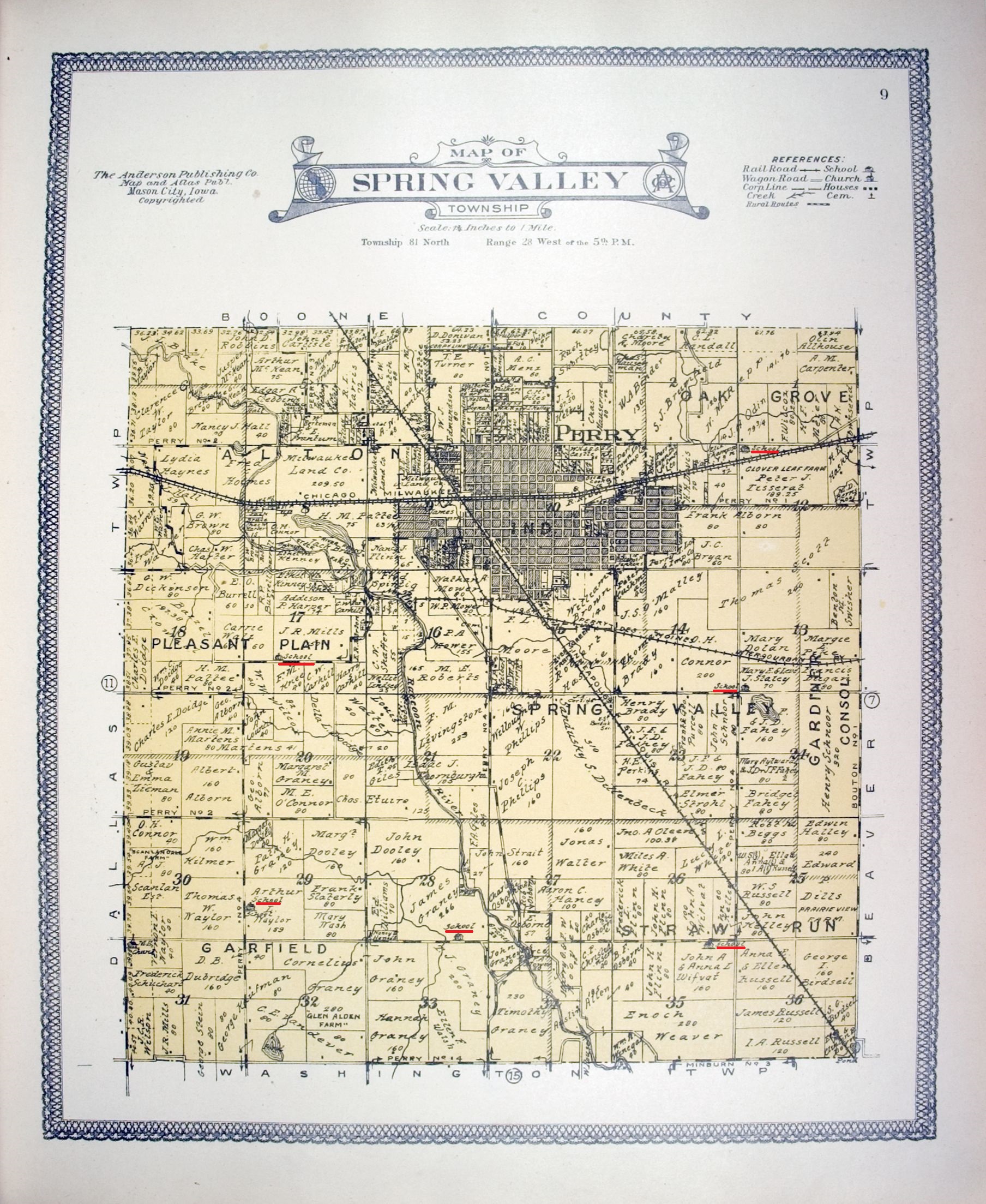–Yellow school buses kicking up a cloud of dust on country roads
–Groups of young people with backpacks and bikes excitedly talking
–The roar of football crowds on a crisp Friday night
These are all sure signs that school is back in session. Perhaps these invoke memories of your own school experiences.
Education has been important in Iowa since 1830, well before it obtained statehood in 1846. The early schools of that time were nothing like the mega-buildings of today. Constructed by early settlers who valued education, they were little more than one-room log cabins, usually built on a one-acre plot of land on the corner of a field which had been donated by the landowner.
Located about two miles apart, they were placed so no child had to walk too far to get to school. In his book, “The History of Perry,” Eugene Hastie described the typical school as “usually about 20 by 26 feet in size, two or three windows on each side, and a door at the end nearest the road. A stove in the middle of the room and a blackboard across the back was the customary arrangement.”
Interestingly, at one time they were built on skids so they could be more easily moved to accommodate the location of the students. One man remembered attending the same schoolhouse in three different places!
The early schools anchored the lives of not only the students but also their families. Outside of school hours, the rural schoolhouses were used as places of worship, socialization and entertainment.
As schools consolidated, many of these buildings were either torn down or moved to become corncribs or even converted into family homes. One of the last remaining examples of one-room schools in Dallas County was the Alton Schoolhouse, which now resides at Forest Park Museum. It was moved there from its original location northwest of Perry.
As these schools have disappeared, the stories that went with them have begun to fade. Groups of interested historians throughout the state are working to make sure these memories are preserved. One such group is researching the locations of the nearly 145 schools that once dotted the landscape of Dallas County. Their goal is to place historical markers at these locations, identifying each school and the years it was open.
In subsequent articles, we will be highlighting each Dallas County township and its schools. If you have any information about the history of these one-room schools—whether about their locations or stories of students who attended them—the group would like to hear from you. Contact Myrna Griffith at wpldirector@minburncomm.net or Sue Leslie at densueles@aol.com.


















